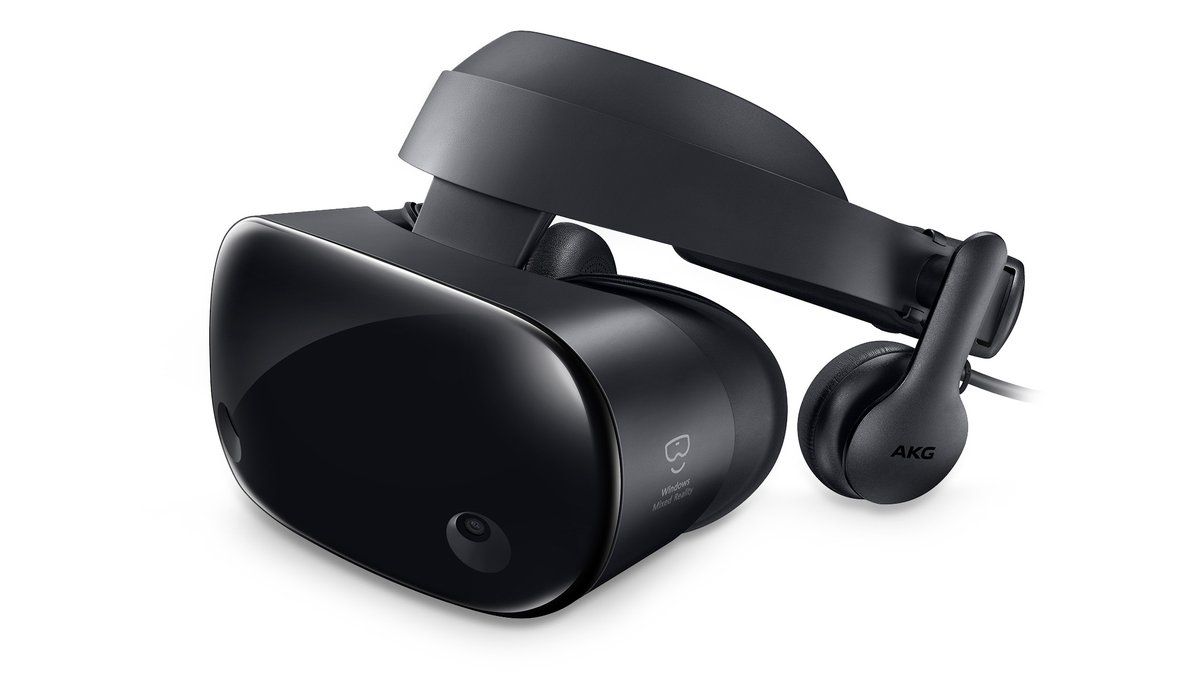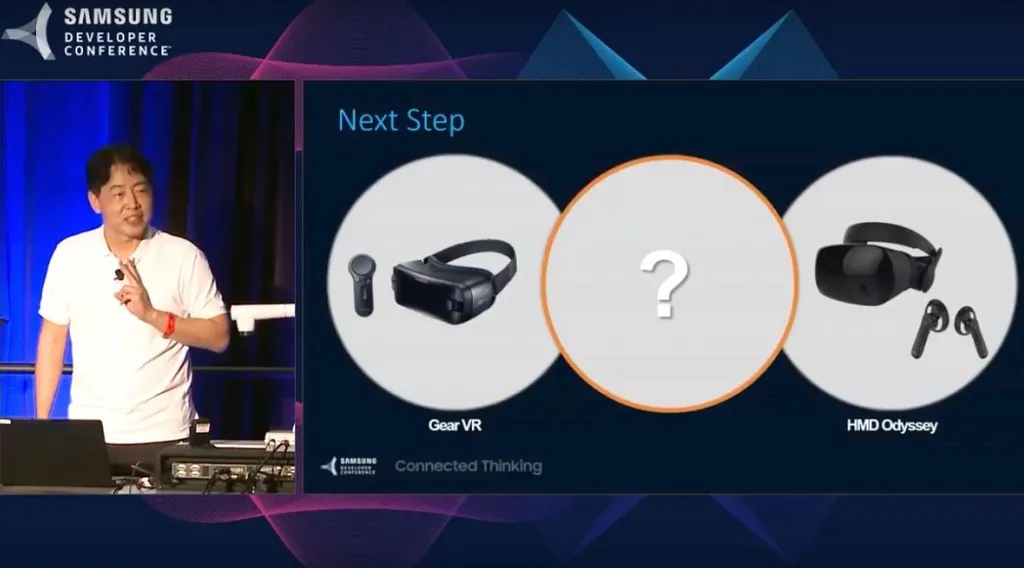With the Gear VR’s launch in 2015, Samsung were technically the first company to release a modern-age consumer VR headset, and Gear VR is still the most owned VR headset on the market. In late 2017 they then launched a PC VR system, the Odyssey, the only ‘Windows Mixed Reality’ headset to use OLED panels and have lens separation adjustment.
Over the past year, there have been multiple hints from Samsung that their next step may be a standalone VR headset with AR capabilities- a “hybrid” so to speak.
In a recent interview with the Malaysian tech news outlet Lowyat.NET, the CEO of Samsung Electronics stated:
“Today, we are heavily looking into incorporating both VR and AR (Augmented Reality). We haven’t decided which route to go with this yet, but we’re working closely with our partners on this. I’ve tested a prototype headset that actually incorporates both VR and AR, and it really delivers a much better experience with that combination.”
This isn’t the first time Samsung officials have hinted at a future VR headset distinct from 3DoF Gear VR or PC-based Odyssey.

At their annual developer conference in November of last year, a Samsung VP told the audience “We think the next mobile VR system would have inside-out positional tracking with 6DoF motion controllers.” He stated that this would be delivered with “global partnerships” that included Intel.
Then, in May of this year, a Samsung official told The Korea Times that they were working on “cordless and high-priced headsets supporting both VR and AR”, and interestingly then added that Microsoft had recently agreed to lower its royalties.
This may be the answer to a major question about a future Samsung standalone headset: what platform and store would it run? With the Gear VR, Samsung used Oculus’ mobile platform and store, however the relationship between these two companies is currently unclear. For example, Samsung even added Google Daydream support to their smartphones and are using Microsoft’s platform on PC. Then earlier this year, Oculus launched its own standalone in the Oculus Go and basically never mentioned the Gear VR at Oculus Connect 5.
Instead, Samsung could be making the first standalone Windows Mixed Reality (WMR) headset (Windows Mixed Reality is currently a PC-only platform, similar to SteamVR). Samsung has not said whether this would use an x86 chip like a PC or an ARM based chip like a smartphone, however the mention of Intel as a partner last November may suggest the former. If this is the case, this may have been what prompted Intel to close their “Project Alloy”, which was a project to create a standalone x86 VR headset reference design for manufacturers to use. It would also make it compatible with existing WMR, rather than requiring developers to recompile for ARM. In fact, it could potentially even run apps built for minimum spec PCs with no changes at all.
It’s important to note that all we know about this headset is just based on hints from Samsung about future plans that may or may not pan out, but if it does become a product, it would be direct competition to Oculus Quest, Facebook’s recently announced 6DoF standalone launching in Spring.
If Samsung are not making their own platform however, it could be difficult for them to compete on price, since they would be unable to recoup a hardware loss with the cut of app sales. The Odyssey is priced at $499 and does contain the computing hardware, yet Oculus are pricing Quest at $399. It is possible however, especially given the “high priced” qualifier Samsung used when speaking to The Korea Times, that Samsung will instead offer a more premium experience, with high margins rather than volumes.


























